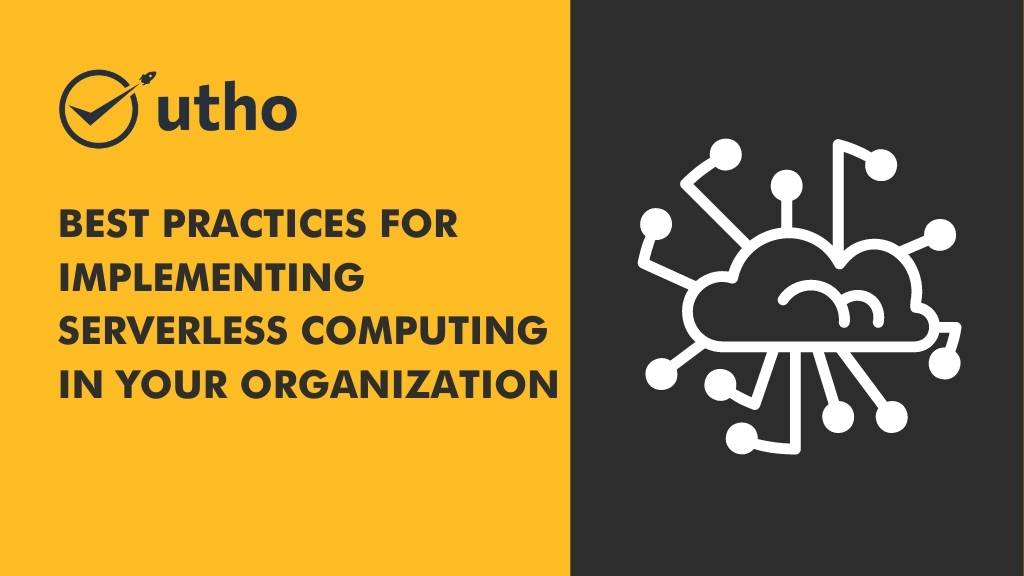Best Practices for Implementing Serverless Computing in Your Organization

Introduction
Serverless computing has become an increasingly popular option for organizations looking to build and run applications more efficiently. With serverless computing, developers can focus on writing code without having to worry about infrastructure management. However, implementing serverless computing in your organization requires careful planning and execution. In this article, we'll discuss some best practices for implementing serverless computing in your organization.
Planning and Architecture
1. Identify the Right Use Cases
Serverless computing can be a great fit for certain types of workloads, such as event-driven applications or applications with unpredictable traffic patterns. Before implementing serverless computing, it's important to identify the use cases that will benefit most from this approach. Consider factors such as workload characteristics, resource requirements, and application dependencies.
2. Design for Scalability and Resiliency
Serverless computing provides automatic scaling and failover, but it's important to design your applications to take advantage of these features. Use a microservices architecture with small, loosely-coupled components that can be scaled independently. Use monitoring and logging to identify and diagnose issues quickly.
3. Understand Your Limits
Serverless computing imposes some limits on resource usage, such as function execution time, memory usage, and network bandwidth. It's important to understand these limits and design your applications accordingly. Use optimization techniques such as caching, batching, and asynchronous processing to minimize resource usage.
Development and Deployment
1. Use Best Practices for Code Quality and Security
Serverless computing requires developers to write high-quality, secure code. Follow industry best practices for code quality and security, such as using code reviews, automated testing, and security scanning tools.
2. Optimize for Performance and Cost
Serverless computing charges based on resource usage, so it's important to optimize your applications for performance and cost. Use techniques such as caching, lazy loading, and serverless-specific optimizations such as cold start reduction techniques.
3. Implement CI/CD Pipeline for Serverless Applications
Implement a CI/CD pipeline to streamline the development and deployment of serverless applications. Use automation tools to build, test, and deploy your applications in a consistent and repeatable way. This will help you catch issues early and reduce the time it takes to deliver new features.
Operations and Monitoring
1. Monitor and Optimize Resource Usage
Serverless computing provides automatic scaling, but it's important to monitor and optimize resource usage to avoid unnecessary costs. Use monitoring tools to track resource usage and identify opportunities for optimization, such as reducing memory usage, optimizing database queries, and reducing function execution time.
2. Establish Clear Governance and Policies
Establish clear governance and policies for serverless computing to ensure compliance with regulatory requirements and best practices. Use tools to enforce policies for resource allocation, security, and access control.
3. Use Cloud-Native Tools and Services
Serverless computing is part of the larger cloud computing ecosystem. Take advantage of cloud-native tools and services such as cloud storage, databases, and analytics to enhance the capabilities of your serverless applications.
**Conclusion**
Implementing serverless computing in your organization can offer significant benefits in terms of cost savings, scalability, and agility. However, it requires careful planning and execution to achieve these benefits. By following these best practices for planning, architecture, development, deployment, operations, and monitoring, you can successfully implement serverless computing in your organization.
If you're interested in learning more about serverless computing and how it can benefit your organization, visit Microhost's website. Their cloud computing experts can help you navigate the serverless landscape and find the right solution for your needs.
Also Read: 5 Most Effective Ways to Avoid Cloud Bill Shocks.